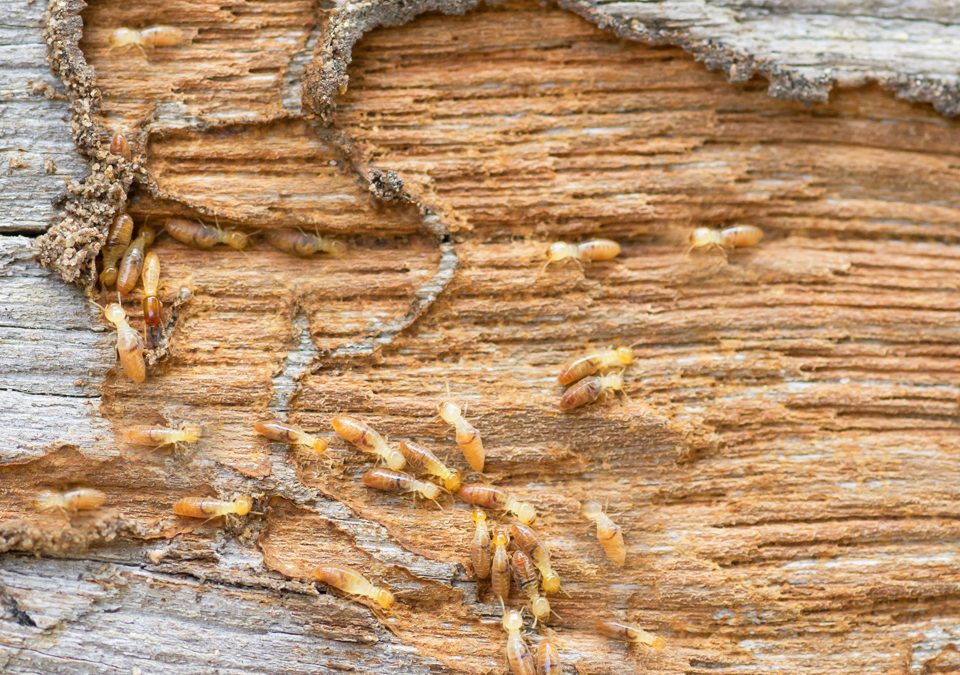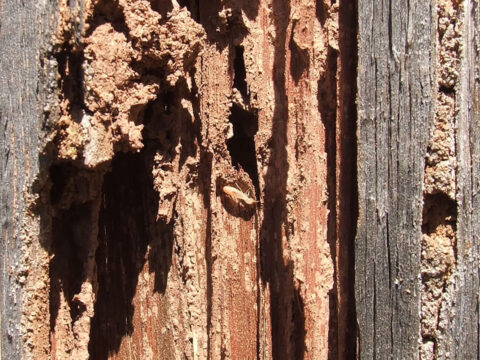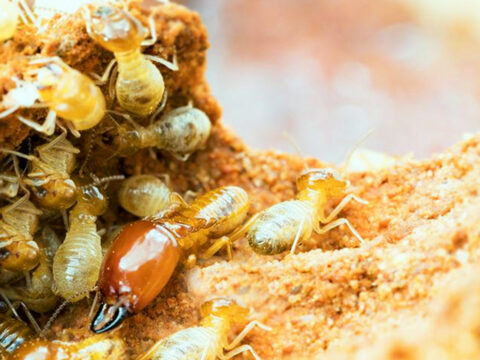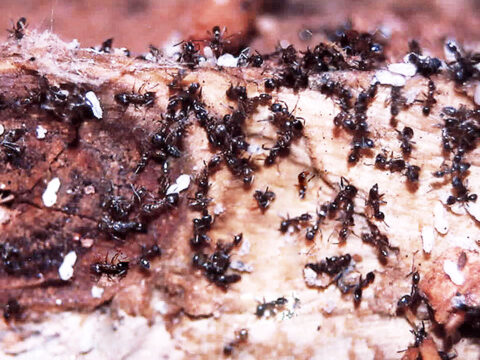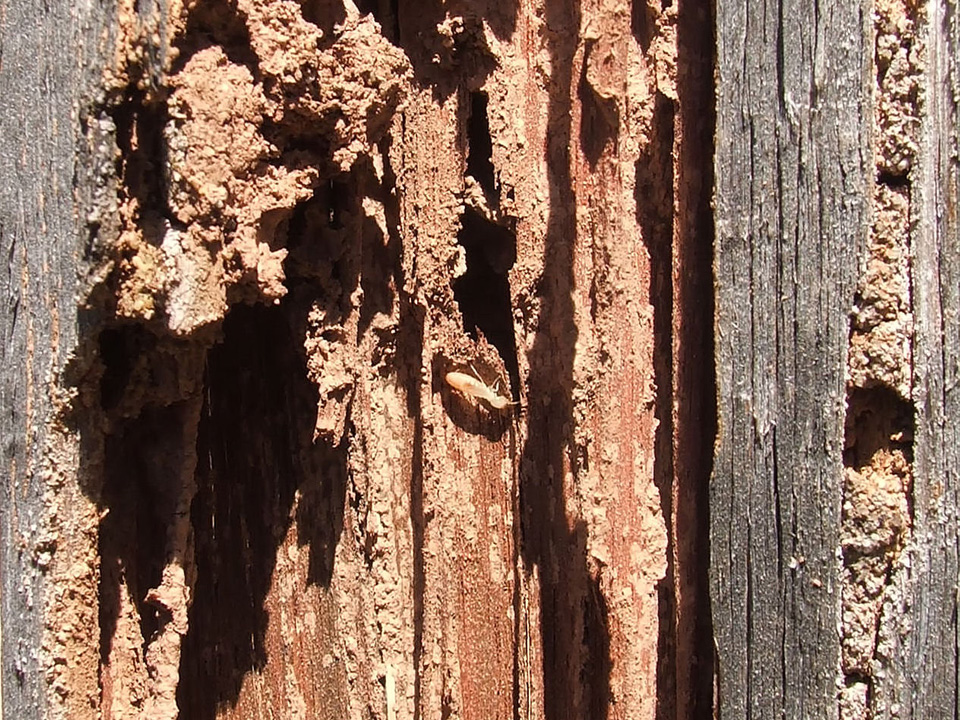
Is Termite Damage Immediately Visible? (The Truth Behind Hidden Damage)
April 19, 2024Termites are among the most destructive pests known to mankind, causing billions of dollars in damage to homes and structures every year. But have you ever wondered where these tiny yet mighty creatures come from? Today, we’re going to investigate just that!
Chem Free Exterminating is a professional termite pest control company serving Los Angeles and Orange County, California. You can count on us when it comes to getting rid of termites from your property!
In the meantime, read the article if you’re curious to know where termites come from. Here, we will delve into the historical evolution and milestones in the origins of termites, shedding light on their interesting journey through time.
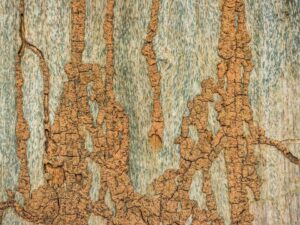 Evolutionary Timeline Of Termites
Evolutionary Timeline Of Termites
Termites have been inhabiting Earth for millions of years, with fossil evidence dating back over 130 million years. These ancient insects resembled cockroaches and are believed to have evolved from cockroaches during the Jurassic period.
As social creatures, termites until this day live in colonies that consist of different castes like workers, soldiers, and reproductives, each caste having their specific role.
Over time, termites diversified and adapted to various habitats, leading to the approximately 3,000 species known today.
Jurassic Era: The Birth Of Termites
During the Jurassic era, when dinosaurs roamed the Earth, termites began their evolutionary journey. Fossil records show that early ancestors of termites lived alongside some of the largest creatures to ever walk the planet.
At that time, these ancient termites had developed a social structure within their colonies, laying the groundwork for future generations.
Cretaceous Period: Rise And Spread
As the Cretaceous period dawned, termites continued to evolve and diversify. They spread across continents and adapted to various environments around the world.
This period marked a significant milestone in termite evolution as they became more specialized in their roles within colonies.
Miocene Epoch: Modern-Day Termites
Fast forward to the Miocene epoch, which began around 23 million years ago. By this time, modern-day termites had emerged with distinct castes performing specific tasks within colonies. The intricate social structure seen in present-day termite colonies had fully developed by this point.
What Is The Environmental Impact Of Termites?
Termites play a crucial role in ecosystems by breaking down dead plant material into humus through a process known as decomposition. This helps recycle nutrients back into soil and promotes overall soil health.
Despite their beneficial role in nature’s cycle, termites can become destructive when they invade human-made structures seeking wood for food, driven by their insatiable appetite for cellulose-rich materials like wood, paper, and cardboard. Since termites feed on wood fibers, any human-made structure can become a target for infestation leading to damage. They do not distinguish between a fallen tree in the forest and the wooden beams supporting your home, therefore, this behavior can become problematic. Unfortunately, this can lead to significant structural damage over time, as termites will weaken beams, walls, and floors, compromising the integrity of the building.
So, Where Are Termites Coming From?
These social insects primarily originate from existing colonies in the surrounding environment, which can include forests, grasslands, and urban areas. These colonies typically consist of large numbers of termites, from a few hundred to several million individuals, organized into a complex social structure.
Termites are typically found in warm climates, like California, and are particularly active during the spring and summer months. Depending on the species, they may nest underground, in moist soil, or within the wood itself. Termites can be subterranean – living underground; drywood – residing in wood above ground; or dampwood – inhabiting decaying and moist wood.
When discussing where termites come from in the context of infestations, it’s important to understand that these insects are constantly searching for new sources of cellulose-based food and nesting sites. When it comes to infestations, termites can originate from nearby colonies in the soil, trees, or other infested structures.
Subterranean termites, for example, may enter homes by constructing mud tubes from their underground colonies to wooden structures above the ground. Drywood termites, on the other hand, can gain access to homes by flying into open windows or cracks in the building’s exterior.
In addition to natural sources, different termite species can also be accidentally introduced to new areas through human activities, such as the transportation of infested wood, soil, or other materials. This dispersal initiated by people can contribute to the spread of termite infestations to new locations.
How Can We Prevent Termite Infestations?
Understanding where termites come from as well as their behavior, biology, and potential sources, can help us prevent and better manage infestations to protect our homes and structures from the extensive damage they can cause.
For instance, knowing that subterranean termites require contact with soil for moisture, homeowners can implement measures such as reducing soil-to-wood contact around their homes, fixing leaks, and ensuring proper ventilation to deter these pests.
Regular inspections by termite pest control professionals can also help identify early signs of infestation, such as mud tubes, discarded wings, or hollow-sounding wood. Remember that early detection is key. It allows for prompt treatment and can save you from costly repairs.
What’s more, educating yourself about the different types of termites and their preferred habitats can guide you to choose the most effective prevention methods and treatments.
Ultimately, although termites may be destructive, their evolutionary history is fascinating. While these pests are essential for the natural cycle of decomposition and nutrient recycling in ecosystems, their wood-consuming behavior can pose a serious threat to man-made structures.
So , if you suspect a termite infestation in your home or business property, get in touch with our team at Chem Free Exterminating in Orange County, California. Our expert technicians will do an inspection and investigate the source of the infestation. They’ll be able to get rid of these pests for once and for all! So don’t delay, call us ASAP!

